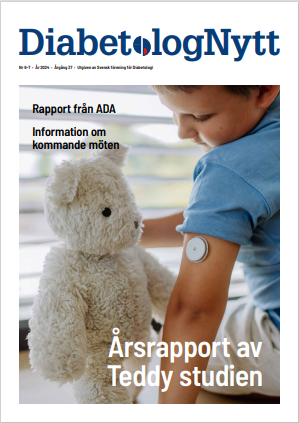Action point
A Swedish observational study National Diabetes Registry (NDR) found an association between lowering HbA1c to 7% and a significantly decreased risk of cardiovascular death over a median follow-up period of more than 5 years.
Note that risks of fatal/nonfatal cardiovascular disease events and fatal/nonfatal coronary heart events were both significantly decreased in those who lowered their HbA1c compared with a group whose HbA1c remained in the high 7% range or increased.
Diabetes patients who responded to glucose-lowering treatment also improved their risk of adverse cardiovascular outcomes.
Those who reduced their hemoglobin A1c levels by nearly one percentage point — from a mean of 7.8% to 7% — had a significant 45% decreased risk of cardiovascular death (HR 0.55, 95% CI 0.49 to 0.63, P<0.001), according to Katarina Eeg-Olofsson, MD, from the University of Gothenburg in Sweden, and colleagues.
The absolute risk of a death from a cardiovascular cause was 9.9 events per 1,000 person-years in patients with decreasing HbA1c and and 17.8 per 1,000 in those with stable or increasing HbA1c, the team reported here at the annual meeting of the American Diabetes Association.
The above results were after the researchers adjusted for covariates such as age, diabetes duration, sex, blood pressure and blood pressure treatment, lipid status and lipid-lowering treatment, HbA1c, albuminuria, and BMI, as well as changes in those risk factors and treatments over time.
The research team said that they undertook the study because of the ongoing debate about the relationship between glycemic control and adverse cardiovascular outcomes.
They analyzed data from the Swedish National Diabetes Register and identified 18,035 patients with baseline HbA1c between 7% and 8.9%. They ranged in age from 30 to 75, had a body mass index over 18 kg/m2, and serum creatinine ≤1.7 mg/dL.
Patients with a history of cardiovascular disease, congestive heart failure, or atrial fibrillation were excluded from the study. The mean duration of diabetes was between 8 and 10 years and the median follow-up was more than 5 years.
Patients were nearly equally divided into those whose HbA1c decreased by 0.1% or more (mean baseline HbA1c 7.8% and final 7.0%) and those whose baseline remained stable or increased (mean baseline HbA1c 7.7% and final 8.3%).
Besides the decrease in total mortality, the researchers found that better glycemic control was significantly associated with risk reductions in fatal and nonfatal coronary heart events of 39% (HR 0.61, 95% CI 0.54 to 0.69) and in fatal/nonfatal cardiovascular disease events of 37% (HR 0.63, 85% CI 0.57 to 0.70). The decreases were both significant at P<0.001.
According to the researchers, the absolute risk of a first fatal or nonfatal event caused by coronary disease was 10.3 per 1,000 person-years for those who had better glycemic control versus 17.9 per 1,000 for those without better control.
Those numbers for a first cardiovascular event were 15.1 and 26.1 events per 1,000 person-years, respectively.
Eeg-Olofsson noted that these patients were receiving routine care for type 2 diabetes, which shows that targeting HbA1c to 7% (the treatment target) can help mitigate the higher risk of cardiovascular events generally seen in diabetics.
They reported they had no conflicts of interest.
Eeg-Olofsson K, et al ”HbA1c reduction and risk of cardiovascular diseases in type 2 diabetes: An observational study from the swedish NDR” ADA 2012; Abstract 415-P.
From Medpage Today
Nyhetsinfo
www red DiabetologNytt





